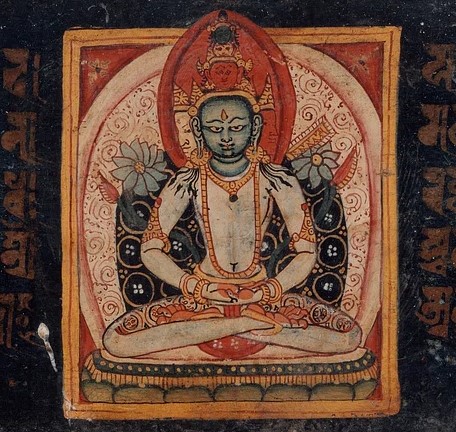Last year, a new anthology of Buddhist texts, entitled Buddhism in Practice, was published. It seems that only once in each generation does someone have the audacity to produce such a book, and in this case, I was that person. In so doing, I placed myself in a long and venerable tradition of trying to encompass the dharma within the covers of a single book. The first such books, issued millennia ago, took the form of palm leaf manuscripts. Before long, they will certainly appear on CD-ROM. Regardless of technological advances, the problems facing the anthologizer have remained the same: What should be included and how should it be organized?
Buddhism seems always to have suffered a surfeit of sutras. Even in the centuries when the teachings were maintained only in memory, it appears that no one monk was expected to remember everything: we find reference to “reciters of the middle-length discourses.” With the explosion of Mahayana sutra writing about four centuries after the Buddha’s death, the problem of a surplus of sutras was greatly compounded. A remedy was attempted in the form of the anthology. The first of these is attributed to the Indian master, Nagarjuna (second-century C.E.). Entitled Compendium of Sutras, it consists of passages from sixty-eight—mostly Mahayana—sutras.
The history of anthologies in the West began in 1871 when Samuel Beal, who described himself as “a Chaplain in Her Majesty’s Fleet,” published A Catena of Buddhist Scriptures from the Chinese. This book included a wide variety of Buddhist texts—for the most part Indian works—that had been translated into Chinese. Its division into five sections (Legends and Myths, Buddhism as a Religion, Scholastic Period, Mystic Period, Decline and Fall) provides an insight into Beal’s view of the history of Buddhism.
The first major attempt at anthologizing occurred as part of the “Sacred Books of the East” series, published in 1894. Ten of the forty-nine volumes of the series were devoted to Buddhism. Reflecting the opinion of the day that Pali texts represented the most accurate record of what the Buddha taught (an opinion since rejected), seven of these volumes contain translations of Pali works.
In 1895, Paul Carus published The Gospel of Buddha According to Old Records. The work was arranged like the Bible, with numbered chapters and verses, and was intended to point up the many agreements between Buddhism and Christianity, thereby bringing out “that nobler Christianity which aspires to be the cosmic religion of universal truth.” Carus drew from the Buddhist sources that were available to him in English, French, and German. He was free in his manipulation of his sources, paraphrasing, abbreviating, and rearranging the translations. In addition, he added several “purely original additions” of his own creating, including the opening passage of The Gospel, “Rejoice at the glad tidings! Buddha, our Lord, has found the root of all evil. He has shown us the way of salvation.” One year later, the Harvard Pali scholar Henry Clarke Warren published what was to be one of the most widely read anthologies of Buddhist texts, Buddhism in Translations. Drawn entirely from Pali sources, it contained a much wider range of materials than had been available.
These works provided much of the material for future anthologies, which were often made up entirely of extracts (often no more than snippets), with the bulk of the materials drawn from the Pali. There were, however, some important exceptions.
Dwight Goddard’s popular 1938 collection, A Buddhist Bible, was organized by language of origin and contained works that had not previously been translated into English. Going against the trend to excerpt “key” passages, Goddard included full translations of these texts. A Buddhist Bible is not, however, without its eccentricities. Goddard rearranged the Diamond Sutra into a more “sensible” order, included the Tao Te Ching, and added a work of his own, entitled “Practicing the Seventh Stage.” Another exception to the “recycling” trend was Edward Conze’s Buddhist Texts through the Ages (1954), which brought together some of the leading scholars of the day to translate works never before rendered into English, including tantric texts.
More recently, Stephan Beyer’s The Buddhist Experience: Sources and Interpretations (1974) includes a rich range of works from Pali, Sanskrit, Tibetan, Chinese, and Japanese, all translated by Beyer. It has been replaced in the same series by John Strong’s excellent new anthology The Experience of Buddhism: Sources and Interpretations (1995).
This long and venerable tradition loomed before me as I set out to make a new anthology. And it was not without a certain sense of trepidation that I undertook the task, understanding that my own book would inevitably join this list.
Thank you for subscribing to Tricycle! As a nonprofit, we depend on readers like you to keep Buddhist teachings and practices widely available.
